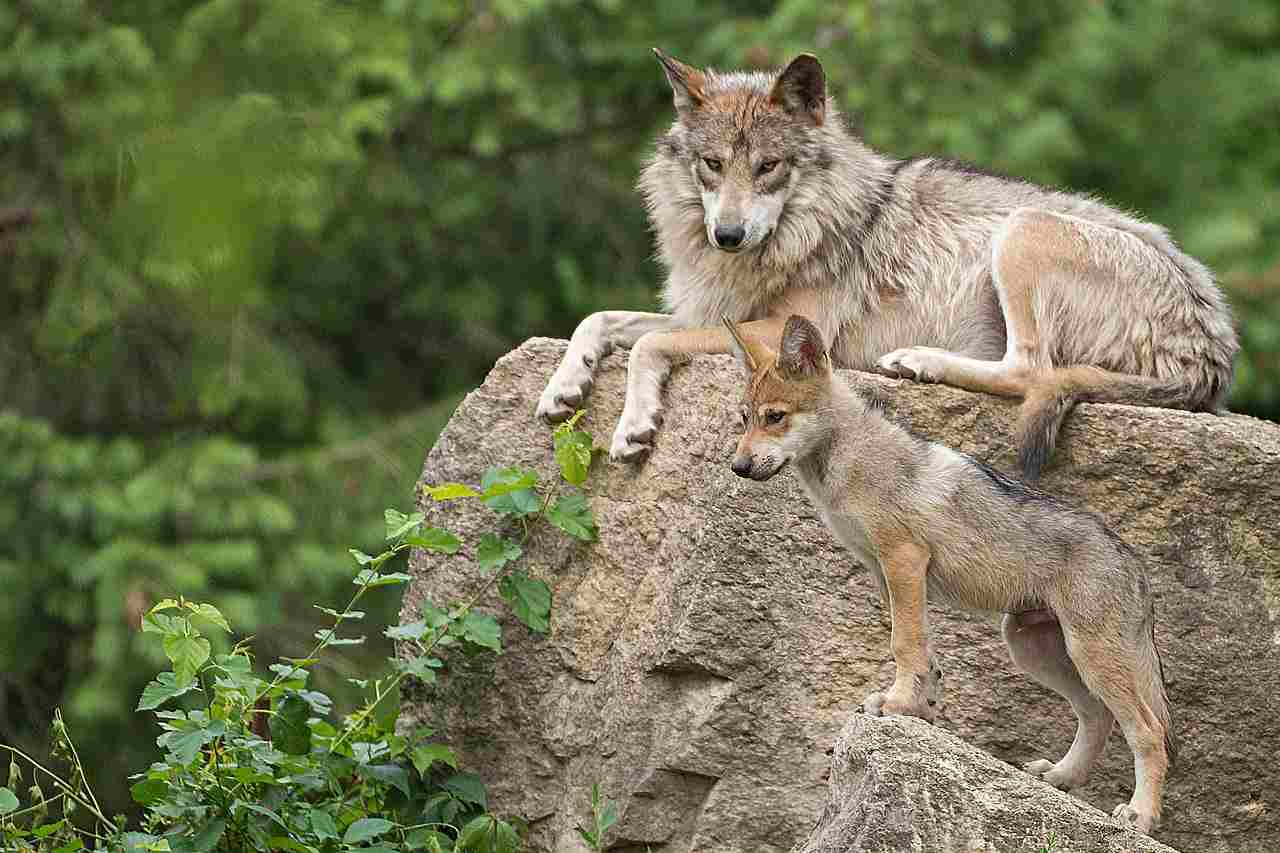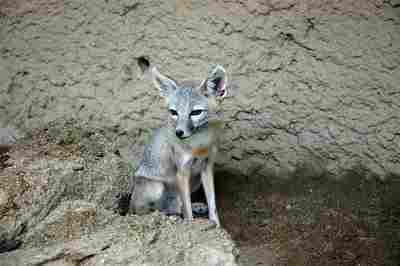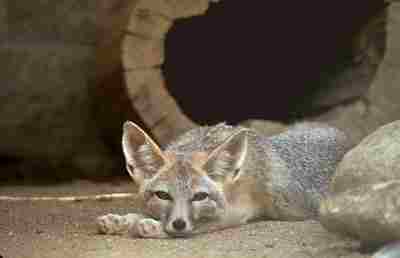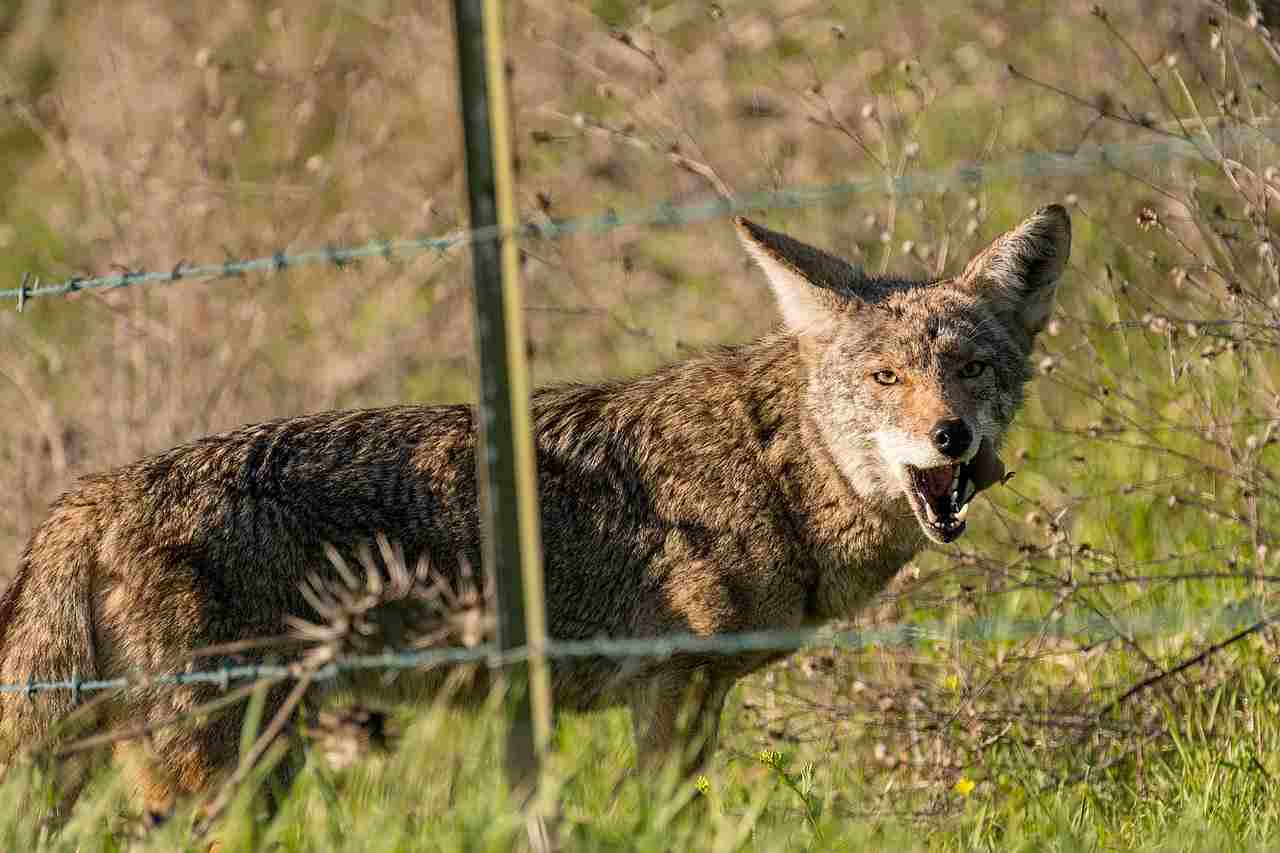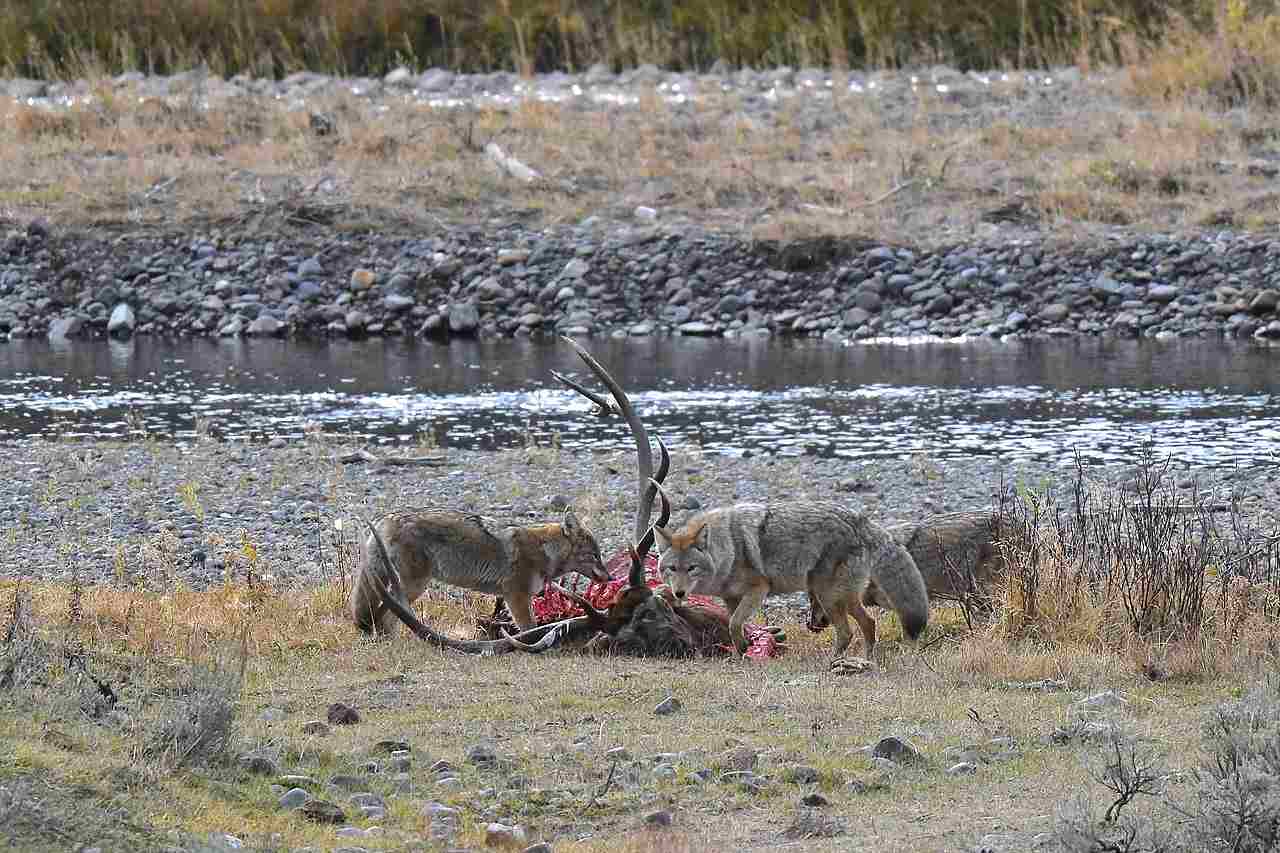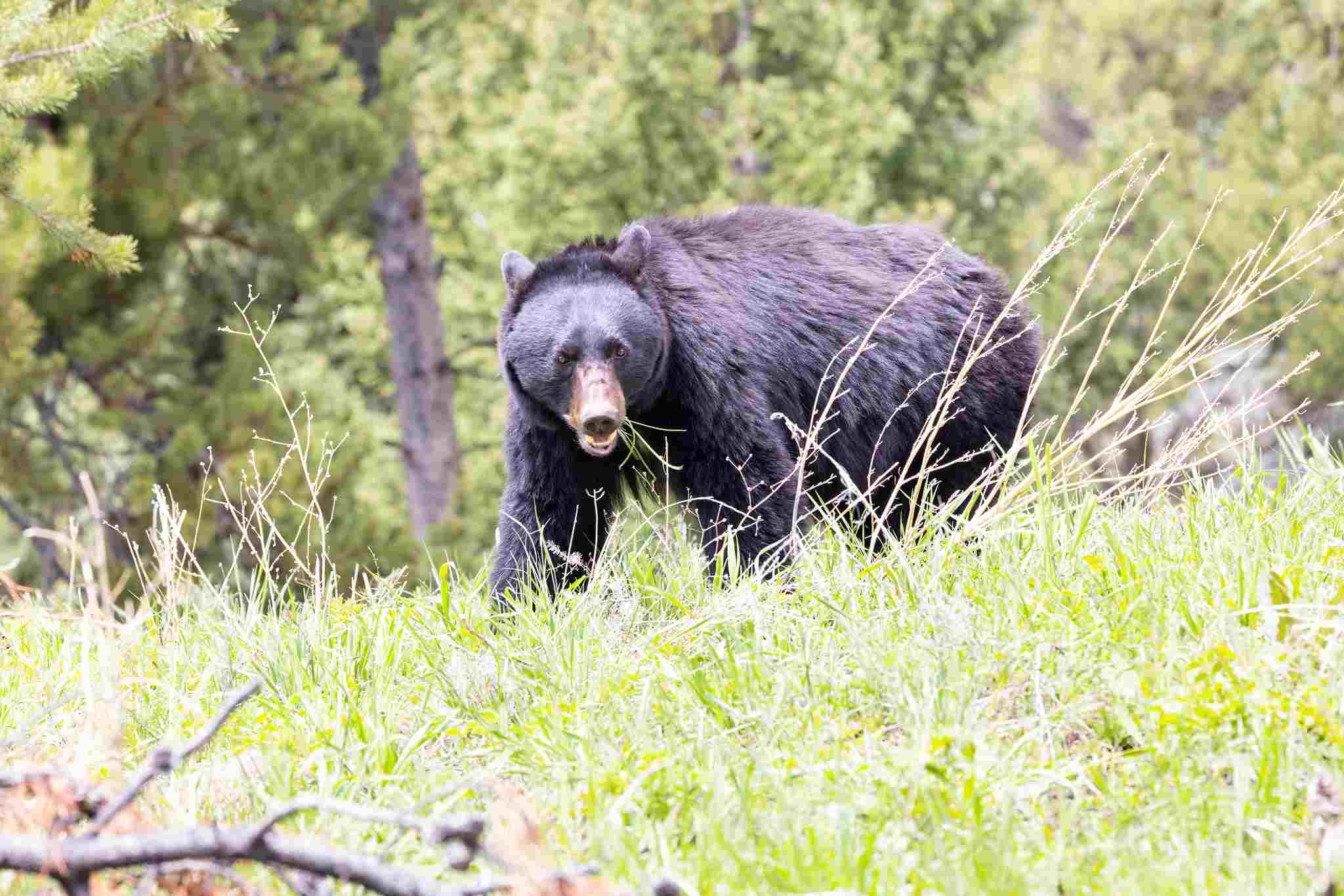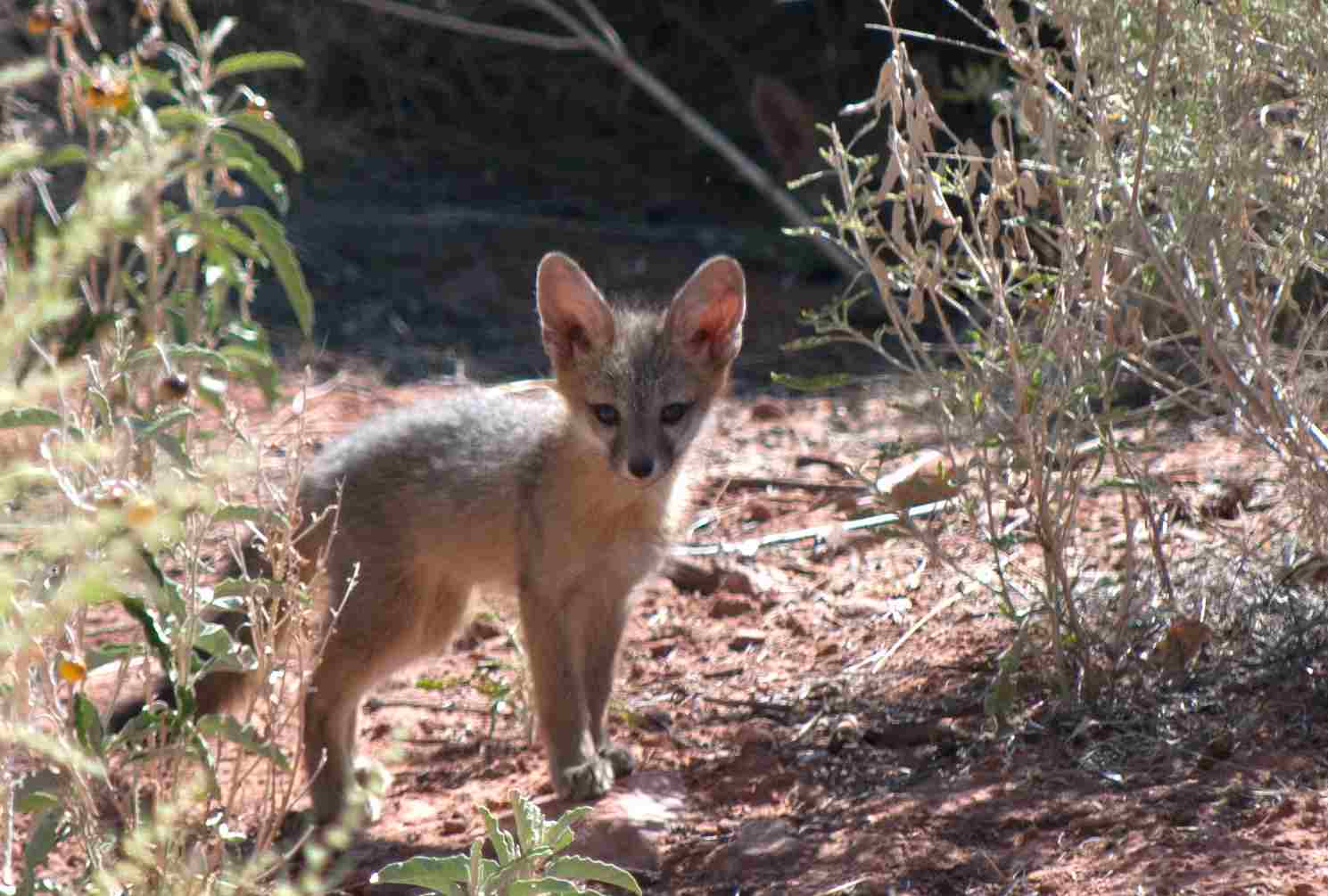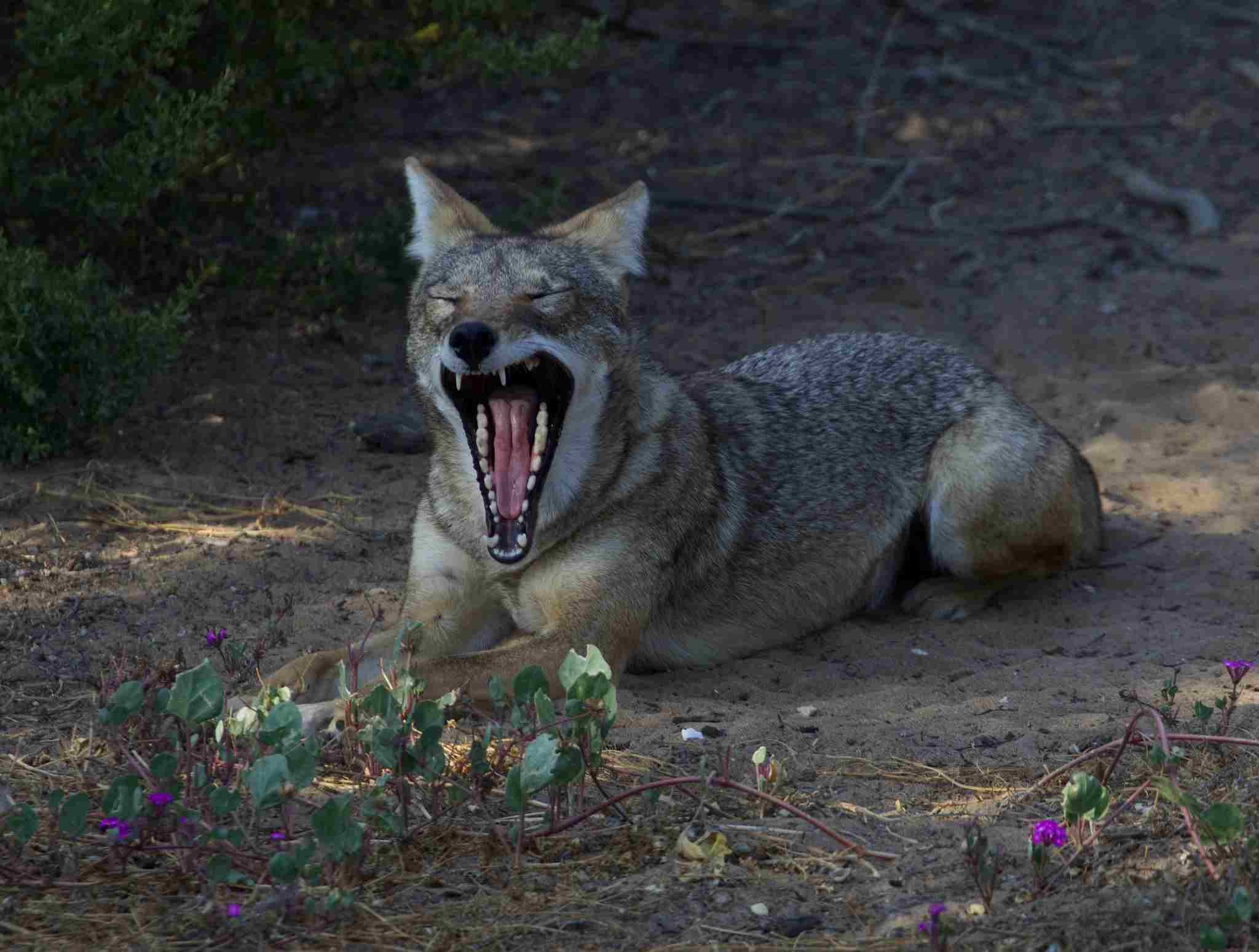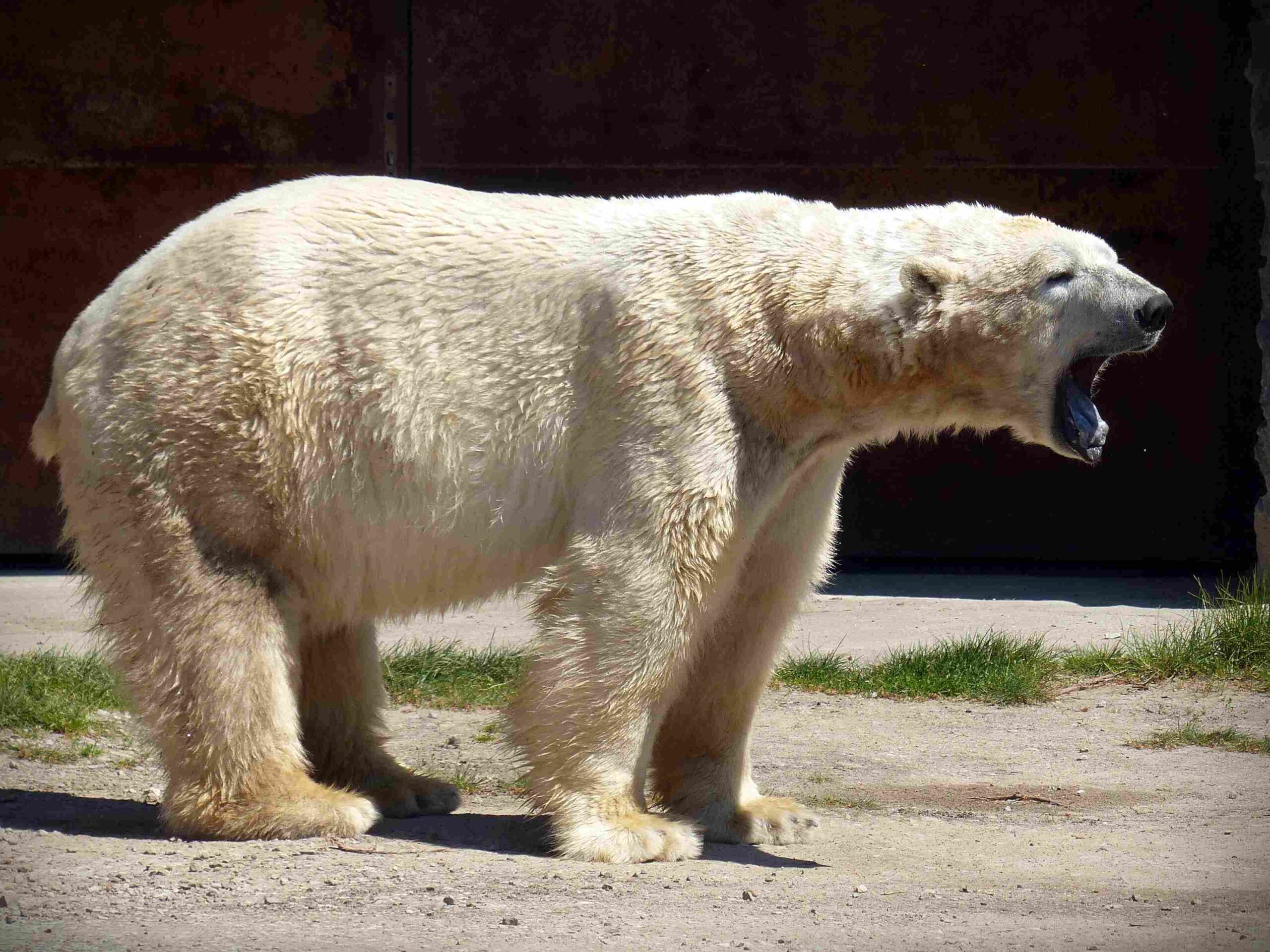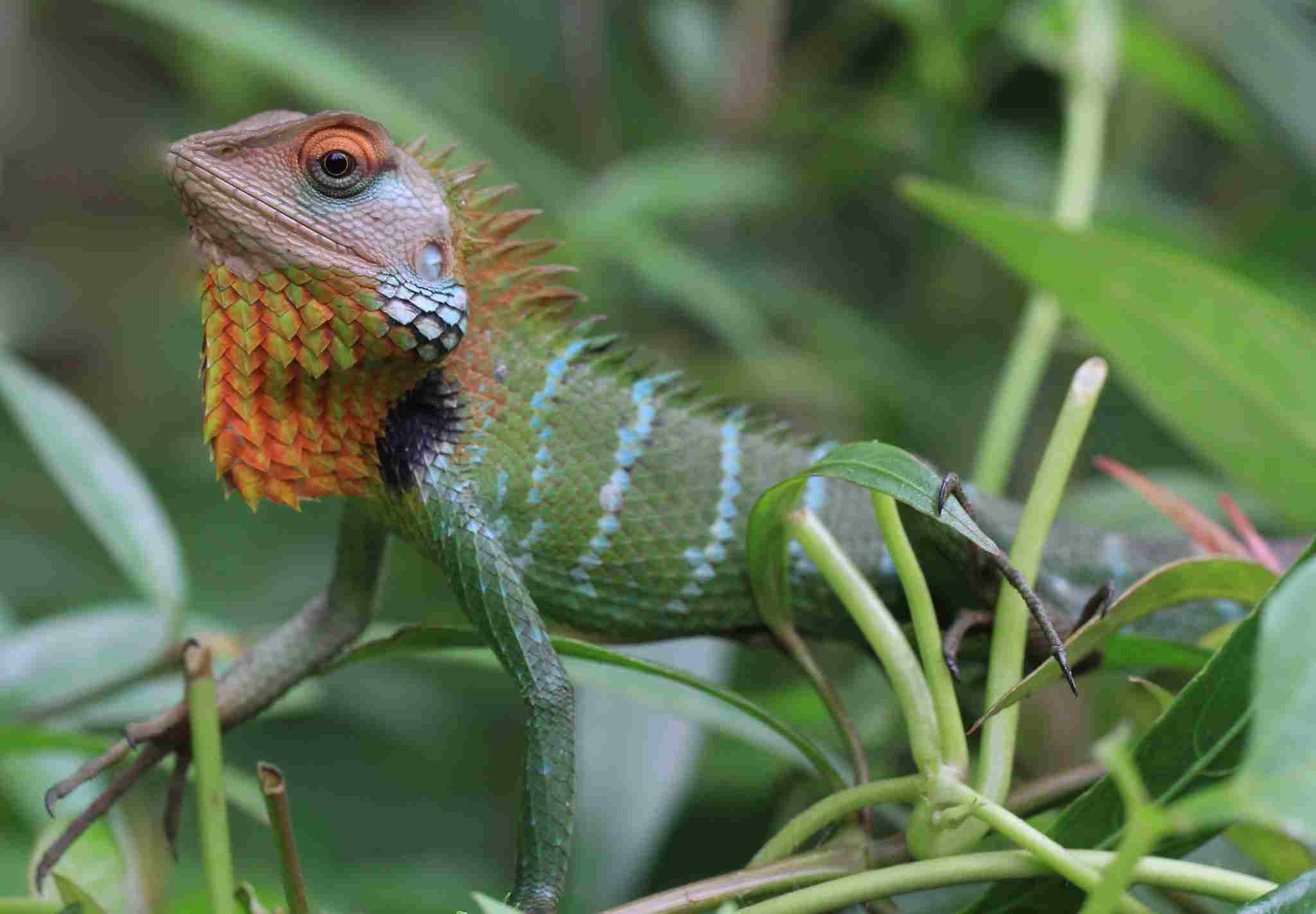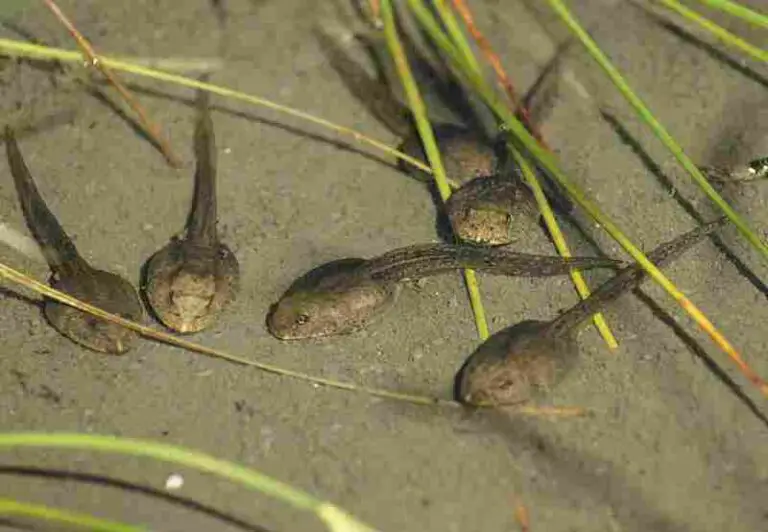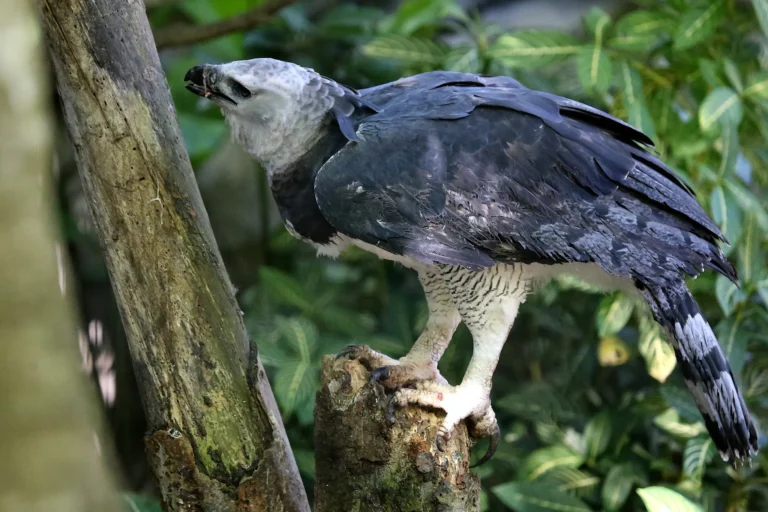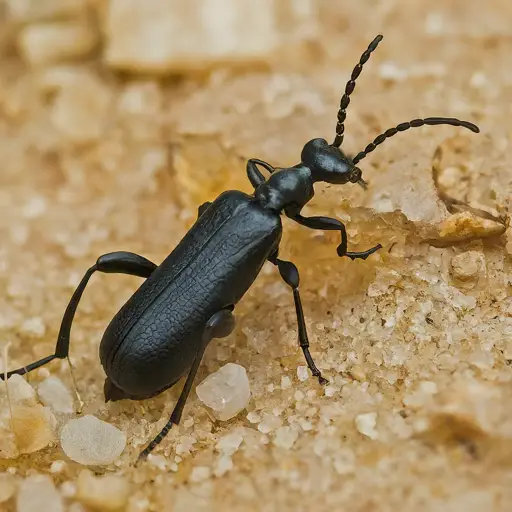9+ Predators In Oregon And Their Characteristics
Examples of predators in Oregon include the Grey Fox, known for its ability to climb trees; the Kit Fox, adapted to desert habitats; the Sierra Nevada Red Fox, which thrives in alpine regions; and the Wolf, a top predator that has faced conflicts due to livestock predation. Coyotes are highly adaptable, while Cougars and Bears often come into conflict with humans due to encroaching habitats. Venomous species like the Black Widow and Western Rattlesnake play important roles in controlling insect and rodent populations, while the Common Desert Centipede is an effective predator of insects and small animals in arid regions.
1. Grey Fox
The Grey Fox is a small to medium-sized carnivore native to Oregon, known for its unique ability to climb trees. Unlike other fox species, the Grey Fox has semi-retractable claws, allowing it to easily ascend and descend trees in search of food or to escape predators. Its dense fur, typically a mix of gray, white, and orange, provides excellent camouflage in the dense woodlands and brushy areas where it is most commonly found. The Grey Fox’s diet is omnivorous, consisting of small mammals, birds, insects, and a variety of fruits and vegetables, adapting to whatever is seasonally available.
These adaptable animals are generally solitary, though they may form small family groups during the breeding season. Grey Foxes are most active at night or during the early morning and evening hours, preferring to avoid the heat of the day. In Oregon, they inhabit a range of environments, from dense forests to coastal scrublands. Despite their adaptability, the Grey Fox faces threats from habitat loss and fragmentation, as well as from human activities like road traffic and hunting, making conservation efforts crucial for their continued survival in the region.
2. Kit Fox
The Kit Fox is a small and slender fox species found in Oregon, known for its large ears and bushy tail. These adaptations help it to stay cool in its desert and arid habitat. Kit Foxes are primarily nocturnal, coming out at night to hunt for small mammals, birds, and insects. Their ability to survive in extreme desert conditions is due to their efficient water retention and their habit of staying underground during the heat of the day.
Despite their resilience, Kit Foxes face threats from habitat loss due to agricultural expansion and urban development. Predators like coyotes and raptors also pose a risk. Conservation efforts aim to protect their habitats and reduce conflicts with human activities. In Oregon, Kit Fox populations are localized, and their survival depends on a combination of habitat preservation and responsible land management.
3. Sierra Nevada Red Fox
The Sierra Nevada Red Fox is a rare and elusive predator native to Oregon’s high mountain regions. With its distinctive red fur and bushy tail, this fox is adapted to cold climates, often inhabiting alpine and subalpine areas. Its diet primarily consists of small mammals like mice and voles, but it also hunts birds and other small game. The Sierra Nevada Red Fox’s unique habitat preferences and its solitary nature make it a less-studied predator in Oregon.
These foxes are threatened by climate change and habitat fragmentation. The warming temperatures can push them out of their natural high-altitude habitats, reducing their available territory. Additionally, human activities such as skiing and other recreational activities can disturb their habitats. Conservation efforts focus on monitoring their populations and understanding their ecology to ensure their survival.
4. Wolf
Wolves in Oregon are an important part of the state’s ecosystem, known for their complex social structure and pack behavior. They are top predators, primarily preying on large ungulates like deer and elk. Wolves play a crucial role in maintaining ecological balance by controlling prey populations and promoting biodiversity. In Oregon, they have been making a slow comeback after being extirpated from the state in the early 20th century.
The recovery of wolves in Oregon has been met with both enthusiasm and controversy. While their presence is seen as a sign of ecological health, it has also led to conflicts with livestock owners. Conservation efforts involve careful management to balance the needs of wolves with those of ranchers and farmers. The Oregon Department of Fish and Wildlife has developed a wolf conservation and management plan to guide these efforts.
5. Coyote
Coyotes are one of the most adaptable predators in Oregon, known for their intelligence and resourcefulness. They can thrive in various environments, from forests and grasslands to urban areas. Coyotes are opportunistic feeders, eating a wide range of foods including small mammals, birds, insects, and even fruits and vegetables. Their ability to adapt to human-modified landscapes has allowed them to flourish across North America.
Despite their adaptability, coyotes often face conflicts with humans due to their tendency to prey on livestock and pets. In Oregon, management efforts aim to reduce these conflicts while maintaining healthy coyote populations. These efforts include public education on how to coexist with coyotes and measures to protect livestock from predation. Overall, coyotes play a key role in the ecosystem by controlling rodent populations and other small prey.
6. Cougar
Cougars, also known as mountain lions or pumas, are large and powerful predators in Oregon. They are solitary animals, typically hunting alone and maintaining large territories. Cougars primarily prey on deer and other large mammals, but they are also known to eat smaller animals when food is scarce. Their stealth and agility make them effective hunters, capable of taking down prey much larger than themselves.
In Oregon, cougars are most commonly found in forested and mountainous regions, where they can find ample cover and prey. However, as human development encroaches on their habitats, cougars may come into closer contact with people, leading to conflicts. Oregon’s cougar management plan aims to balance conservation with public safety, focusing on education, research, and responsible hunting practices.
7. Bear
Bears in Oregon, primarily black bears, are versatile predators and scavengers. They inhabit a variety of environments, from dense forests to coastal areas. Black bears are omnivorous, eating a wide range of foods including plants, fruits, insects, and small mammals. They are also known to scavenge human food and garbage, leading to occasional conflicts with people. Black bears are generally solitary, except during mating season or when a mother is raising her cubs.
In Oregon, black bears are protected by wildlife management regulations to ensure their populations remain healthy. Hunting is allowed, but it is carefully regulated to prevent overharvesting. Conservation efforts focus on minimizing human-bear conflicts and promoting coexistence through public education and proper waste management practices. These efforts aim to maintain a balance between human activities and bear populations.
8. Black Widow
The Black Widow is a venomous spider found in Oregon, easily recognized by its shiny black body and the distinctive red hourglass marking on its abdomen. Black widows are typically found in dark, secluded areas, such as woodpiles, sheds, or under rocks. Although their bite is venomous, they are generally not aggressive and will only bite in self-defense. The venom can cause muscle pain, cramps, and other symptoms, but severe reactions are rare and treatable.
Despite their fearsome reputation, Black Widows play an important role in controlling insect populations. They feed on a variety of insects, helping to keep their numbers in check. In Oregon, public education is key to reducing fear and promoting safe practices when encountering these spiders. Wearing gloves while working in areas where Black Widows might be present and avoiding sudden movements can help prevent bites.
9. Western Rattlesnake
The Western Rattlesnake is a venomous snake species found in Oregon, known for its distinctive rattle at the end of its tail. These snakes are typically found in arid and rocky areas, where they use their camouflage to blend in with their surroundings. Western Rattlesnakes are ambush predators, waiting for small mammals like mice and rats to pass by before striking. Their venom contains hemotoxins that can cause tissue damage and blood clotting issues, but bites are rare and rarely fatal with prompt medical treatment.
Despite their reputation, Western Rattlesnakes are an important part of the ecosystem, helping to control rodent populations. In Oregon, public awareness and education are key to reducing conflicts with humans. People are encouraged to stay on marked trails, wear sturdy shoes, and be aware of their surroundings when hiking in rattlesnake habitats. Conservation efforts focus on protecting their natural habitats and ensuring sustainable management of their populations.
10. Common Desert Centipede
The Common Desert Centipede is a large centipede species found in Oregon’s arid regions. These centipedes are known for their long, segmented bodies and multiple legs, giving them a fearsome appearance. They are carnivorous, preying on a variety of small animals, including insects, lizards, and even small mammals. Their bite is venomous and can cause significant pain and swelling, but it is rarely dangerous to humans.
In Oregon, the Common Desert Centipede is typically found in dry, rocky areas, where it can find shelter and prey. Although their venomous bite can be painful, these centipedes play an important role in controlling insect populations and other small prey. Public education is essential to help people understand the role of centipedes in the ecosystem and how to avoid bites by being cautious in their habitats.
*Summary
-
Grey Fox: Tree-climbing fox with omnivorous diet; threatened by habitat loss.
-
Kit Fox: Desert-adapted fox; threatened by habitat loss and predators.
-
Sierra Nevada Red Fox: Alpine-adapted fox; threatened by climate change.
-
Wolf: Top predator; recovering population, causing livestock conflicts.
-
Coyote: Highly adaptable; conflicts with humans over livestock predation.
-
Cougar: Solitary big cat; conflicts with humans due to habitat encroachment.
-
Bear: Omnivorous black bears; conflicts with humans due to scavenging.
-
Black Widow: Venomous spider; beneficial for insect control.
-
Western Rattlesnake: Venomous snake; important for rodent control.
-
Common Desert Centipede: Large, venomous centipede; important for insect control.
| Predator | Description |
| Grey Fox |
Tree-climbing fox; omnivorous; habitat loss
|
| Kit Fox |
Desert-adapted; threatened by habitat loss
|
| Sierra Nevada Red Fox |
Alpine fox; threatened by climate change
|
| Wolf |
Top predator; conflicts with livestock
|
| Coyote |
Highly adaptable; conflicts with livestock
|
| Cougar |
Solitary big cat; habitat encroachment
|
| Bear |
Omnivorous black bear; scavenges human waste
|
| Black Widow |
Venomous spider; beneficial for insect control
|
| Western Rattlesnake |
Venomous snake; rodent control
|
| Common Desert Centipede |
Large centipede; important for insect control
|
